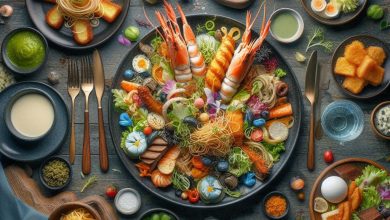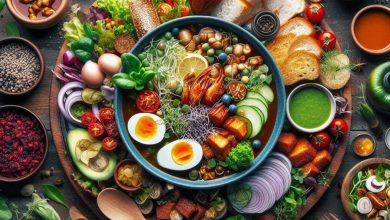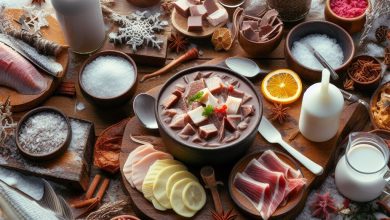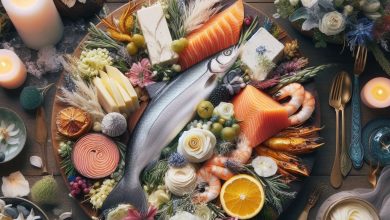What is the national cuisine, traditional dishes and food in Iceland?

National Icelandic cuisine: what to try
Icelandic cuisine stands on two pillars: fish and meat. In addition, whales are eaten here, this is not a joke and we will talk about it later.
The national cuisine of Iceland is the usual menu of Icelandic peasants, tested for centuries. Only unlike the Italian peasants who gave the world pizza and ravioli, their Icelandic colleagues passed on to their descendants a recipe for boiled lamb’s head and hundreds of variations on the theme of salted, dried and pickled fish, including the rotten shark, which is called dried here, but from the truth you won’t run away.
hardfiskur
If you want to try something truly Icelandic quickly and inexpensively, go to any supermarket and buy locally produced dried or marinated fish. Usually it is haddock, cod, salmon, herring. The most popular option is a dish called hardfiskur – dried or dried cod or haddock. The fish comes out very dry, so they put it on bread with butter and sometimes red algae.
Howcarl or Hackcarl and Brennyvin
Dried shark meat, which is prepared as follows: shark meat is buried in the ground or simply put in a special box with earth for about 10 weeks, where it rots to the desired condition, after which the whole thing is taken out and hung on a hook so that the meat wilts.
You can buy this dish in a store or order it in a restaurant or cafe. At the Loki cafe (address: Lokastígur 28, Reykjavík), for example, you can try hackarl for about 12 euros, complete with the traditional Brennivin drink, a high-alcohol schnapps based on potatoes and caraway seeds. It is customary to complement each other with fire Brennivin and haukarl, so they are often written on the menu as one dish.
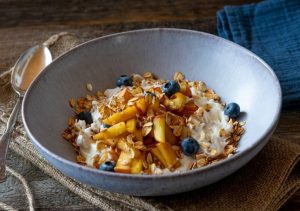
Volcanic Bread
Rye bread cooked in metal bowls that are buried in special places where volcanic activity occurs underground. Butter is usually spread on it, and dried or salted meat or fish is placed on top.
Gravlax or Graavilohi
This is just the kind of fish that can be put on top of volcanic bread. Salmon, salmon or trout are marinated in a mixture of salt, sugar and pepper and served with sauce, potatoes, bread or pies.
Skyr
Traditional Icelandic yogurt is neither too fatty nor too sweet. It can be diluted with water, fruits or nuts can be added, in general, it can be eaten like regular yogurt. Skyr is mentioned in the Icelandic sagas, so buy a jar from the store and join the culture.
Gellur
Boiled or baked fish tongues, which are not actually tongues, but are hypoglossal muscles. Gellur is most often served with vegetables and sauce.
lundi
The Icelandic version of the pigeon, puffins, are cute birds with bright orange beaks that live on the coast of the Atlantic Ocean. You can admire them, admiring their clumsiness and charm, or you can try puffin fillets with berry sauce or grilled puffins.
Whale meat dishes
In Iceland, whale hunting is allowed, but not for all, but only for the minke whale, and you can try its meat in local cafes and restaurants. Fragrant steaks or kebabs are prepared from whale meat, which are complemented with sauces and vegetables.

Svid
Half a sheep’s head, boiled without the brain, served with eyes and teeth, but previously cleaned of wool – if that doesn’t sound like a song, then what? The meat turns out very tender, how tender can be a dish that has teeth.
How much does food cost in Reykjavik: where to eat inexpensively and tasty
A hot dog or a slice of pizza and coffee at a street kiosk can be purchased for 5 euros. For a salad you will pay about 8 euros, a sandwich at Subway will cost about 6-7 euros, a burger, fries and a drink at KFC about 10-13 euros. Note that there has been no McDonalds in Iceland since the 2008 crisis.
You can buy a cappuccino for 4 euros, for a cake you will have to pay another 4-5 euros. A multi-course lunch in a cafe will cost 15-20 euros.
The approximate cost of food for 2 people for 3 days will be approximately 80 euros, which is much cheaper than eating in cafes and eateries. Rumor has it that once impressed by the prices of food in Iceland, it is very difficult to come there without your Rollton.
And travelers who go to Iceland in their car fill up the entire trunk with food. The Icelandic customs service allows you to import up to 3 kg of food into the country, as well as 1 liter of spirits and 1 liter of wine or 1 liter of spirits and 6 liters of beer or 1 liter of wine and 6 liters of beer or 2.2 liters of wine. It is forbidden to carry meat products (except cooked), milk and eggs.
Tap water in Iceland is drinkable. The purest artesian water flows from any tap in the country. If you order a glass of ordinary water in a cafe, they won’t charge you because they will pour it from the tap, unless you ask for bottled water, of course. Hot tap water is also drinkable, but it smells like hydrogen sulfide, or more specifically, rotten eggs. The fact is that hot water enters Icelandic homes directly from thermal springs and contains hydrogen sulfide. It is absolutely safe and even useful, but unpleasant in smell and taste.

